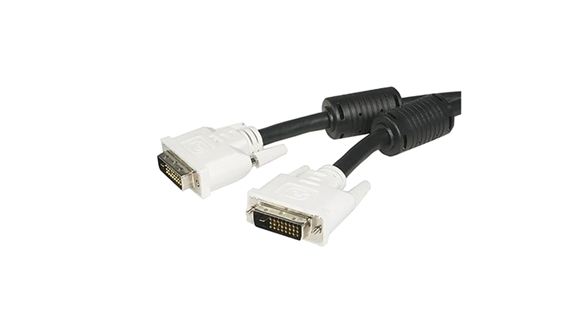Though they make look simple, there is a lot more happening with the cables that connect your computer or laptop to a display. At the end of the day, we just want to see everything displayed on our monitors with crystal clarity.
One of the most common connector types through the years has been the Digital Visual Interface (DVI) cable. What you may not have realized is that there are several different types of DVI cable that may apply to your specific setup. Read on to find out more about these different types and what they bring to the table.
What is a DVI Cable?
Before you go running out to get a DVI cable from a vendor like RS, it helps to know what a DVI cable is and how it applies even HYPERLINK “https://fubarnews.net/category/technology/”to modern technology. DVI stands for Digital Visual Interface and supports both digital and analog video signals. What’s so important about that is it does so over a single DVI cable.
In the old days, multiple cables would be required to send analog and digital signals. But with the implementation of DVI, it not only made things cleaner and easier, but provided a better, clearer picture to displays.
Types of DVI Cables
As it stands, there are three different types of DVI cables that you will find available. There are also two types of links (more on that below) to be aware of, but let’s get to the three different types of DVI first.
DVI-A. A DVI-A cable transfers only an analog signal. The connector usually goes into a DVI card to a CRT monitor (which is a pretty old type of monitor). The signal from the cable gets converted from digital to analog, but it is still able to produce a better quality of image than VGA cables.
DVI-D. This cable works for digital signals only. There are plenty of HYPERLINK “https://www.censtry.com/blog/dvi-connector-definition-types-advantage-and-disadvantage.html”advantages of using DVI, one of the most common being that you can find cables that support digital, analog, or both. A DVI-D is popular because it can connect DVI cards to LCD monitors. This one comes in single- or dual-link formats, providing faster data transfer rates, which offer more power and a better picture.
DVI-I. This type of cable offers both analog and digital transfers. It is also compatible with both types of equipment since it can act as either a DVI-D or DVI-A. The only problem with this one is that it can’t convert DVI-D outputs to analog.
Single – and Dual-Link Connectors
In this day and age, if you are looking for DVI connections, you are going to find two cables: single- and dual-link. This refers to the part of the connector that plugs into your device and it refers to the amount of pin clusters you will find.
Single link. A single link DVI connector has just one pin cluster, comprised of 18 pins. The pins are what transfer data from your device’s video card into the display. This is the standard and it is capable of transferring digital and analog.
Dual link. The dual link has two separate clusters of pins, totaling 24 pins. Though this type of connector only works for digital, the transfer rate is far faster and it is capable of supporting much higher resolution rates. If you are looking to create as clear a picture as possible, dual-link can support resolutions of up to 2560 x 1600. Though that doesn’t quite compare to some of the high-performance displays out there, it is more than enough for most of the common hookups you will find.
